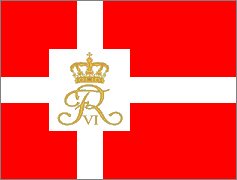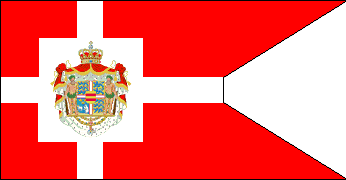KINGDOM OF DENMARK
NATIONAL & REGIONAL FLAGS • FOURTEENTH CENTURY TO THE PRESENT
Denmark's existence as an independent kingdom dates from the 8th century, and the Danish monarchy is the oldest in Europe. The current monarch, Queen Margrethe II, traces her lineage back to Gorm the Old and Harald Bluetooth, 10th-century Viking kings of Denmark and Norway. At various times Denmark has controlled, in addition to Jutland and the adjacent Baltic islands that constitute the modern kingdom, parts of southern Sweden, Norway, Iceland, Greenland, territories in northern Germany and portions of the Baltic States. The country's strategic position between the North Sea and the Baltic Sea involved it in many conflicts and wars over the centuries
From 1397 to 1523 Sweden was part of the Kalmar Union, a personal union of the kingdoms of Denmark, Norway and Sweden (which at the time included most of present-day Finland) under a single monarch. The Union also embraced Norway's overseas possessions: Greenland, Iceland, the Faroe Islands, the Northern Isles (the Orkney and Shetland Islands) and some German territories south of Denmark. The Union came to an end in 1523 when Sweden became independent under King Gustav V. However, Denmark and Norway remained in personal union under the Danish crown; the latter enjoyed considerable autonomy, with its own laws, coinage and army. The personal union was dissolved in 1814, Norway being detached from the Danish crown and handed over to Sweden in compensation for the latter's loss of Finland to Russia. However, Denmark retained control of the Faroe Islands, Iceland and Greenland. Iceland became independent in 1944, but the other two remain linked to Denmark as self-governing autonomous territories.
See also The Scandinavian Cross.














